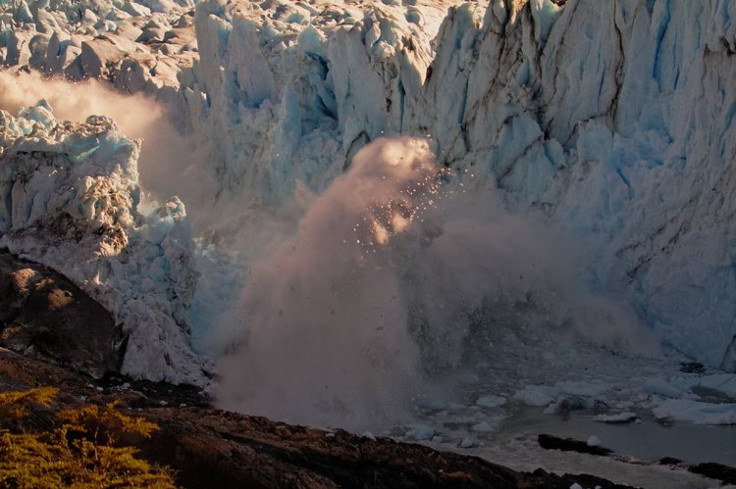Patagonia Glacier Collapse Captured On Camera
One amateur photographer got the shot of a lifetime in January, when he witnessed the spur of a massive glacier in Argentina crack and tumble into a Patagonian lake below, precipitating a massive wave as dammed-up waters were released.

Christian Grosso’s photo was featured as the Earth Science Photo of the Day by NASA’s Earth Science division on Feb. 5.
“I was one of perhaps 20 privileged people in Los Glaciares National Park this midsummer day to witness the spectacle,” Grosso wrote for EPOD.
The Perito Moreno glacier is more than 18.5 miles long, stretching from 6,825 feet above sea level in the Andes mountains down to the warm waters of Lago Argentino, a tenth of a mile above sea level. The glacier, which covers 97 square miles, is one of the largest reserves of fresh water in the world. Over time, Perito Moreno moves down from the mountain and sticks out a “tongue” of ice, forming an ice bridge that acts as a natural dam across a southern spur of Lago Argentino.
Behind the ice bridge, water levels can rise nearly 100 feet above the normal water levels of the lake.
The meltwater from the south piles up against the ice bridge until it eventually gives way, cracking and sending the ice bridge crashing into the lake as the water rushes in. The bridge usually reforms every few years, and the entire cycle begins anew. The last two major collapses happened in 2008 and, most recently, March 2012. On average a rupture happens every four to five years.
You might be curious as to why the photo shows the glacier with a jagged blue face of ice. The ice is blue because it is so thick and consolidated that bubbles do not interfere with the light passing through it. Bubbles make ice look white because they scatter and reflect the full spectrum of light. But deep within the icy heart of a glacier, red light gets absorbed much more efficiently than blue light, meaning that most of the light that bounces back to us is blue, coloring the ice anywhere from robin’s egg to periwinkle.
The intermittent rupturing of Perito Moreno’s icy tongue has made the glacier one of the biggest tourist attractions in Patagonia.
"This glacier is somewhat unique in that its path takes it across an arm of a large lake," NASA scientist and EPOD curator Jim Foster told the site OurAmazingPlanet. "Most glaciers don't have such trajectories, so bridging and tunneling, at least at this scale, is rather rare."
One of the other visitors on the same day that Grosso snapped his amazing shot also managed to get video of the rupture:
© Copyright IBTimes 2024. All rights reserved.











